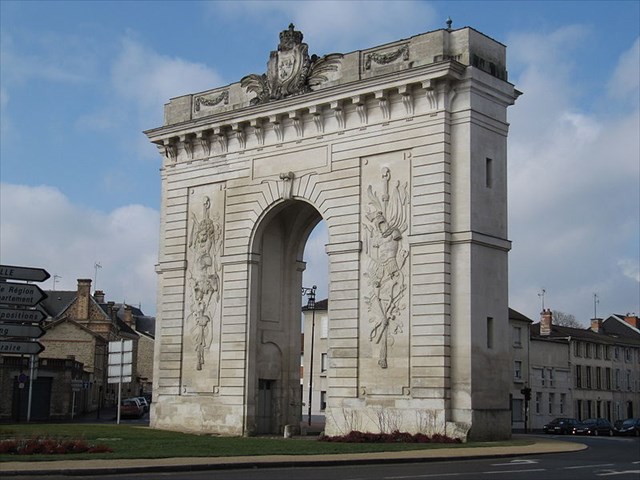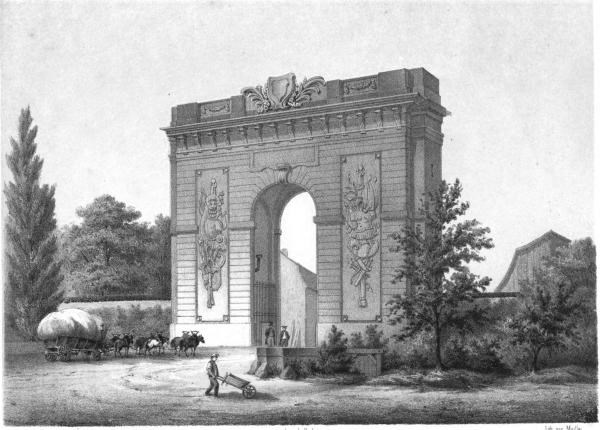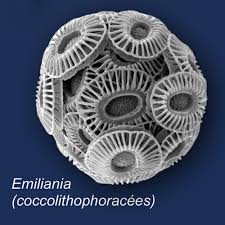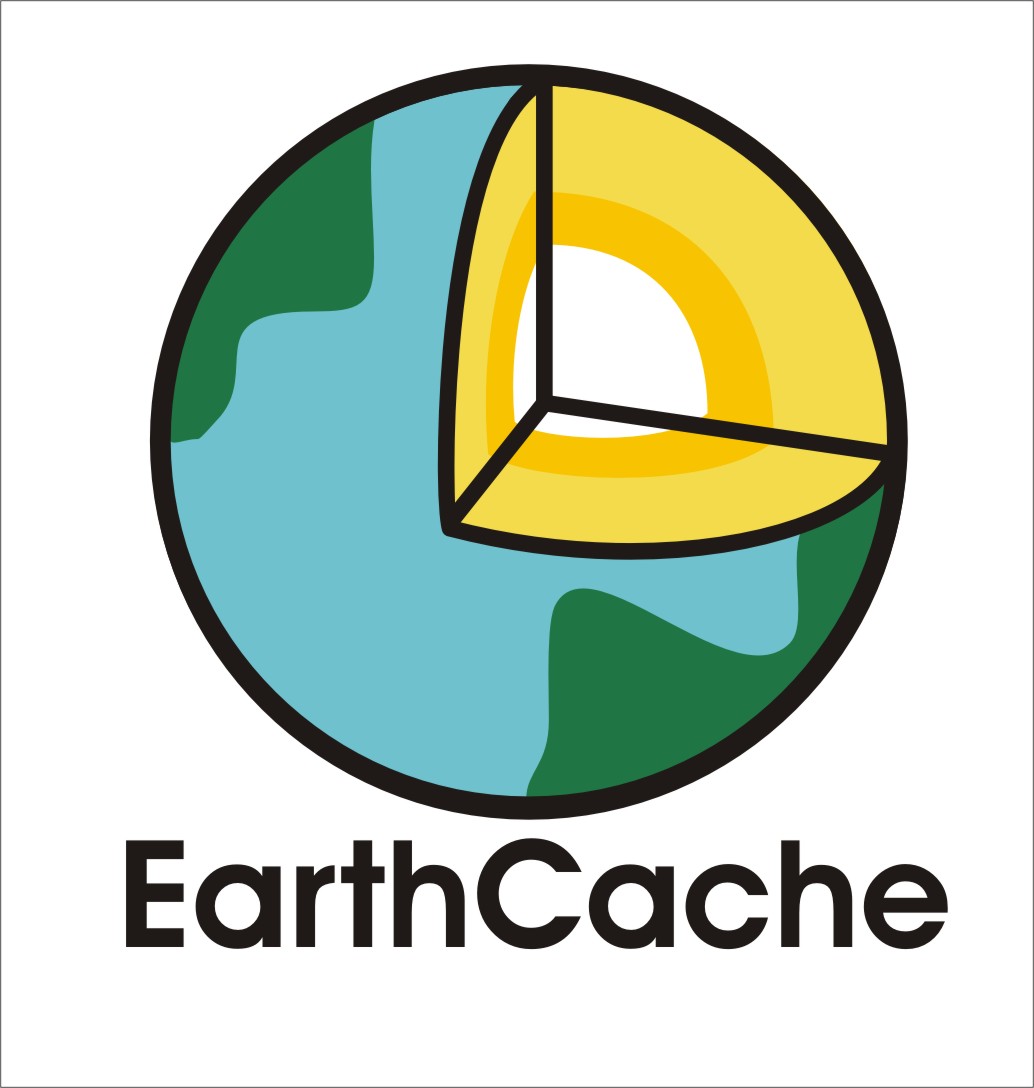La porte en craie
L’histoire de la porte de Sainte-Croix

La porte au XIIe siècle formait la limite de la ville fortifiée avec les faubourgs de Neufbourg. En 1536 elle est déplacé à l'emplacement des églises Sainte-Catherine et Sainte-Croix pour agrandir l'enceinte de la ville. L'intendant Nicolas d'Orfeuille embellissait la ville en rasant les anciennes fortifications et les cimetières Saint-Eloi et Sainte-Catherine en créant les espaces verts qui longent l'actuelle rue de Gaule. À cette occasion il fait appel à l'architecte Nicolas Durand pour édifier une nouvelle porte, c'est l'actuelle.

Également appelée Porte Dauphine elle a été dédiée en 1771 à Marie-Antoinette, à l'occasion de son arrivée en France pour son mariage avec le Dauphin, le futur roi Louis XVI. Seule la face Sud-Est, visible par Marie-Antoinette lors de son arrivée, est ornementée. Les sculptures sont l'œuvre d'Antoine Lépine.
Géologie : La craie
La craie est une roche sédimentaire contenant presque exclusivement du carbonate de calcium CaCO3 et un peu d'argile. La craie est perméable, poreuse et friable.

La craie est un calcaire un peu particulier. Généralement très pure, elle peut cependant être marneuse (lorsque le calcaire et l'argile sont en proportions à peu près égales), glauconieuse (si elle contient de la glauconie), dolomitique (si elle contient des recristallisations de dolomite comme dans la craie de Vernon), à silex, etc. La craie contient fréquemment des niveaux de silex interstratifiés. Le tuffeau est de la craie micacée ou sableuse à grain fin, de couleur blanche ou crème parfois jaunâtre, contenant quelques paillettes de mica blanc (muscovite).
L’origine de la craie
La craie s'est formée par accumulation de squelettes de microorganismes marins, notamment coccolithes, en particulier à l'époque géologique du Crétacé auquel elle a donné son nom. À ce titre, la craie fait partie des puits de carbone géologiques et elle joue un rôle important pour le cycle du calcium. Au cours du Crétacé supérieur (entre -100 et -65 millions d'années), d'importantes couches de craie se sont déposées sur l'actuel Bassin parisien.

Les couches de craie sont souvent des aquifères. Il en est ainsi de la nappe phréatique de l'Artois ou de celle, gigantesque, de la Beauce qui couvre 9 000 km².
Afin de valider cette Earthcache, il va vous falloir répondre à quelques questions, pour ce faire aller sur mon profil et envoyez-moi vos réponses.
Questions
Question N°1 : Expliquez-moi ce qu’est le Tuffeau.
Question N°2 : Comment se forme la craie?
Question N°3 : Comment sont appelées les couches de craie?
Question N°4 : Sur place, à l'aide du spoiler, décrivez-moi ce que vous pouvez observer derrière le rectangle rouge? Et quel est l'état de ce que vous pouvez observer?
Une photo de vous devant la Porte jointe à votre log serait agréable, même si celle-ci n’est pas obligatoire.
The door chalk
The history of the gate of Holy Cross

The door to the twelfth century formed the boundary of the walled city with the suburbs of Neufbourg. In 1536 she moved to the location of churches St. Catherine and St. Croix to enlarge the city walls. The steward of Nicolas Orfeuille beautified the city hugging the ancient fortifications and cemeteries Saint-Eloi and St. Catherine by creating green spaces that run along the current street of Gaul. On this occasion he uses the architect Nicolas Durand to build a new door is present.
 Also called Porte Dauphine it was dedicated in 1771 to Marie Antoinette, on the occasion of his arrival in France for his marriage to the Dauphin, the future King Louis XVI. Only the south-east face, visible by Marie Antoinette when she arrived, is ornamented. The sculptures are the work of Antoine Lépine.
Also called Porte Dauphine it was dedicated in 1771 to Marie Antoinette, on the occasion of his arrival in France for his marriage to the Dauphin, the future King Louis XVI. Only the south-east face, visible by Marie Antoinette when she arrived, is ornamented. The sculptures are the work of Antoine Lépine.
Geology: Chalk
Chalk is a sedimentary rock containing almost exclusively CaCO3 calcium carbonate and a little clay. Chalk is permeable, porous and crumbly.

Chalk is a rather unusual limestone. Generally very pure, it can however be marl (when limestone and clay are in approximately equal proportions) glauconieuse (if it contains glauconite), dolomite (if it contains dolomite as recrystallizations in chalk Vernon), flint, etc. Chalk frequently contains levels of interbedded chert. The limestone is chalk or sandy micaceous fine grain white or sometimes yellowish cream, containing some white flakes of mica (muscovite).
The origin of chalk
The chalk was formed by the accumulation of skeletons of marine microorganisms, including coccoliths, especially the Cretaceous geological period to which it gave its name. As such, chalk is part of geological carbon sinks and plays an important role for calcium cycle. During the Late Cretaceous (-100 to -65 million years), large chalk layers were deposited on the current Paris Basin.

Chalk layers are often aquifers. This is the water table of the Artois or that gigantic, Beauce, which covers 9000 km².
To validate this Earthcache, you will have to answer some questions, to do this go to my profile send me your answers.
Questions
Question 1: Explain to me what the Tuffeau.
Question 2: How to form the chalk?
Question 3: How are called the chalk layers?
Question 4: On the spot, with the spoiler, describe me as you can see behind the red rectangle? And what is the state of what you can see?
A picture of you in front of the door attached to your log would, be nice even if it is not mandatory.
Bon geocaching!
